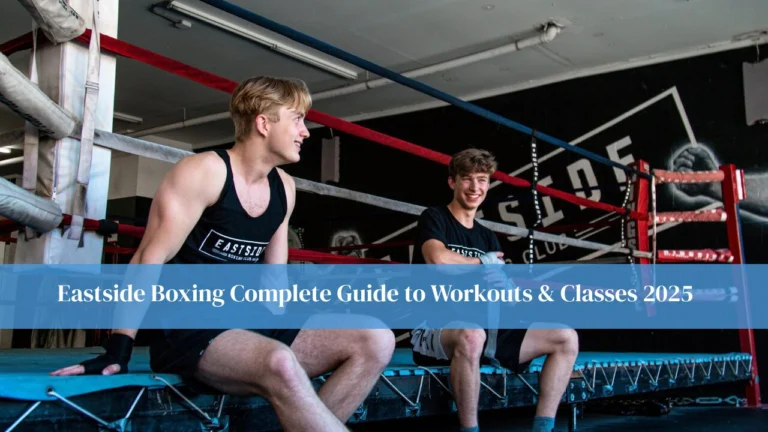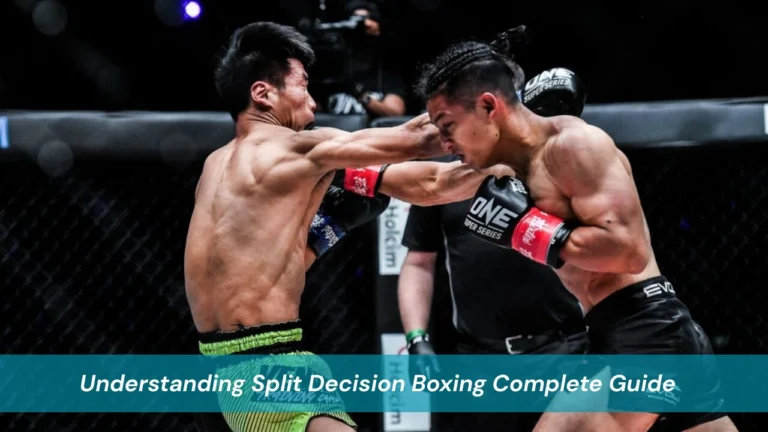If you step into the ring, you’ll quickly realize that offense alone won’t win fights. Boxing is often described as the art of hitting without getting hit, which means mastering defense is just as important as developing knockout power. Whether you’re an amateur learning the ropes or an experienced fighter refining your craft, understanding how to defend punches in boxing is crucial. Not only does it protect you from unnecessary damage, but it also creates opportunities to counter and control the pace of the match. In this comprehensive guide, we will explore defensive fundamentals, advanced techniques, training methods, common mistakes, and practical tips you can use to sharpen your defensive skills.
Key Takeaways
- Defense is as important as offense in boxing, protecting fighters while creating counter opportunities.
- Core defensive techniques include high guard, slipping, parrying, bobbing and weaving, shoulder roll, and proper footwork.
- Consistent training with shadowboxing, partner drills, and defensive sparring develops reflexes and instincts.
- Avoid common mistakes like exaggerated movements, predictability, and over-reliance on a single technique.
Why Defense is the Foundation of Boxing
Many beginners approach boxing with the mindset that landing punches is all that matters. However, experienced fighters and coaches know that good defense is what separates champions from journeymen. Defense is not about running away or avoiding engagement; rather, it’s about controlling space, conserving energy, and frustrating your opponent until they make mistakes you can exploit. When you can anticipate and neutralize incoming shots, you force your opponent to overcommit. This allows you to open counterpunching opportunities that can change the momentum of the fight.
In boxing, there are generally four layers of defense. The first is evasion, where you rely on head movement and footwork to make punches miss. The second is blocking, using your guard to absorb strikes. The third is parrying, where you deflect punches slightly off course. Finally, there is the clinch, which ties up your opponent and prevents them from landing clean shots on the inside. When you combine these layers, you create a defensive system that keeps you safe while also setting up your offense.
Core Defensive Techniques in Boxing
The most fundamental defensive method is the high guard, where both gloves are positioned near the temples with the forearms angled inward to shield the face and body. A solid guard allows you to absorb straight punches on the gloves and body shots on the elbows. Fighters like Gennady Golovkin have used a tight guard to walk down opponents without taking unnecessary damage. The key is to keep the elbows tucked and maintain a disciplined stance so there are no gaps in your defense.
Slipping is another essential technique, involving small head movements that allow punches to glide past you. Instead of leaning too far or exaggerating movement, a good slip is quick, tight, and efficient. By slipping to the outside of a jab, you create the perfect angle for a counter right hand. Floyd Mayweather Jr. was famous for his ability to slip shots and return fire with precision. The beauty of slipping is that it doesn’t take you out of position; it simply repositions your head enough to make your opponent miss by inches.
Parrying, on the other hand, is about redirection. Using a quick tap or push with your glove, you can deflect an incoming jab or cross slightly off target. This not only prevents the punch from landing but also puts your opponent temporarily out of position, giving you the perfect window to counter. Parrying requires good timing and awareness, but it is one of the most energy-efficient defensive moves you can learn.
For hooks and wide shots, bobbing and weaving, also called rolling, is particularly effective. This involves bending at the knees and shifting your upper body underneath a punch. When done correctly, you avoid the hook while simultaneously setting yourself up to come up on an angle with your own counter. Mike Tyson, under the peek-a-boo style taught by Cus D’Amato, was a master at weaving under punches and exploding with combinations as he came up.
The shoulder roll, also known as the Philly Shell, is a more advanced style of defense. By angling your body and using the rear shoulder to deflect punches, you make it difficult for your opponent to land clean shots. Fighters such as Mayweather popularized this technique, using it to frustrate even the best offensive boxers. However, the shoulder roll is not recommended for beginners because it requires precise timing and exceptional reflexes to execute properly.
Finally, defense is not just about upper body movement. Footwork is your first line of defense. By stepping out of range, pivoting, or circling your opponent, you can make punches fall short before they even reach you. The best boxers combine defensive movement with ring generalship, controlling distance and forcing their opponents into ineffective attacks. When all else fails, clinching can also be used to tie up an aggressive opponent and stop their momentum. Clinching is legal in both amateur and professional boxing, but referees will break it if overused. Still, when used strategically, it can be a lifesaver in the heat of a fight.
Training Drills to Build Defensive Reflexes
Knowing defensive techniques is one thing, but making them second nature requires consistent training. Shadowboxing with defensive focus is one of the simplest yet most effective drills. Instead of just throwing punches, imagine your opponent firing back at you. Each time you throw a jab, visualize a counter coming and practice slipping, rolling, or blocking as you move. This helps build the habit of always returning to defense after offense.
Another useful tool is the double-end bag. Its unpredictable rebound forces you to react quickly, developing reflexes for slipping and parrying. Working the double-end bag for just a few rounds each session can dramatically improve your ability to anticipate punches. Partner drills are equally valuable. For example, one boxer can throw controlled jabs while the other practices parrying and returning a counter jab. These drills should be performed at a slow pace at first, gradually increasing intensity as timing improves.
Incorporating defensive sparring into training is also essential. This involves setting rules where one fighter focuses solely on offense while the other only works on defense. By limiting variables, you can isolate defensive skills and practice them under realistic pressure without the distraction of throwing your own punches. Over time, defensive actions will become instinctive, allowing you to stay composed even in high-intensity situations.
A simple eight-week defensive training plan could include three sessions per week where the first 10 minutes are dedicated to shadowboxing with head movement, followed by 20 minutes of partner drills or bag work focused on parries and slips, and finishing with controlled defensive sparring rounds. By consistently following this structure, you will see significant improvement in your reflexes, balance, and overall defensive ability.
Common Mistakes to Avoid in Defensive Boxing
While practicing defense, many beginners fall into the trap of exaggerating their movements. A slip that moves the head a foot off the center line is unnecessary and often leaves you off balance. Remember, the best defensive moves are small, efficient, and keep you ready to counter. Another frequent mistake is dropping the hands after throwing a counterpunch. It is tempting to admire your work, but failing to return to your guard immediately leaves you vulnerable to retaliation.
Predictability is another danger. If you always slip to the same side or use the same defensive move, your opponent will quickly catch on and adjust. The solution is to mix your defense: sometimes slip, sometimes block, sometimes step back. This variety keeps your opponent guessing and prevents them from setting traps. Finally, relying too heavily on one technique is risky. While the shoulder roll or high guard may work against some opponents, no single defense works against all styles. A balanced approach that combines movement, blocking, and countering is far more effective.
Defensive Styles and How to Apply Them
Different fighters employ different defensive strategies depending on their strengths. Counterpunchers often rely on slipping and rolling to bait opponents into missing before delivering sharp counters. Floyd Mayweather is the most famous example, using the shoulder roll and parries to perfection. Swarmers or pressure fighters, such as Mike Tyson, use bobbing and weaving combined with a high guard to close distance safely before unleashing powerful combinations on the inside. Out-fighters, on the other hand, depend heavily on footwork and range control, using jabs and lateral movement to keep opponents at bay.
By studying these styles, you can identify which approach suits your physical attributes and boxing personality. If you are quick and reflexive, counterpunching may be your style. If you are aggressive and powerful, a swarming defense might suit you better. Regardless of style, every fighter benefits from mastering the fundamentals before layering on advanced techniques.
Safety, Equipment, and Practical Considerations
Proper equipment is critical when practicing defensive drills. Always use hand wraps and well-padded gloves to protect your hands during partner work. A mouthguard is non-negotiable during sparring, as even light shots can cause damage without it. Headgear can also reduce superficial injuries during practice, although it will not prevent concussions. Start all defensive drills slowly, focusing on accuracy and timing before increasing speed. Defense is about control, not reckless movement.
FAQs
What is the easiest way for a beginner to defend a jab?
The simplest method is to keep your guard high and parry the jab with your lead hand while stepping slightly back. This keeps you safe while maintaining balance to counter.
How often should defensive drills be practiced?
Defense should be part of every session. Aim for at least 20 minutes of dedicated defensive work two to three times per week. Within four to eight weeks, most beginners notice significant improvements.
Is clinching a legal form of defense?
Yes, clinching is legal in both amateur and professional boxing. However, referees discourage excessive clinching and will separate fighters if it goes on too long.
Can beginners safely practice slipping and rolling?
Yes, but it should be introduced gradually. Start with shadowboxing to develop the movement pattern, then progress to controlled partner drills before applying it in sparring.
Conclusion
If you want to defend punches in boxing effectively, you need to view defense as an essential part of your identity as a fighter, not just an afterthought. A strong defense allows you to stay in the fight longer, frustrate your opponents, and create openings for devastating counters. Begin with a solid guard, add in slips and parries, master footwork, and refine these tools through consistent, focused training. Over time, defense will become second nature, and you’ll find yourself not only taking fewer shots but also landing more of your own.
Boxing may be known as the sweet science of offense, but the real magic happens when defense and attack flow together seamlessly. Train it deliberately, apply it in sparring, and let it transform the way you fight. Visit Boxing Essential to explore more.




